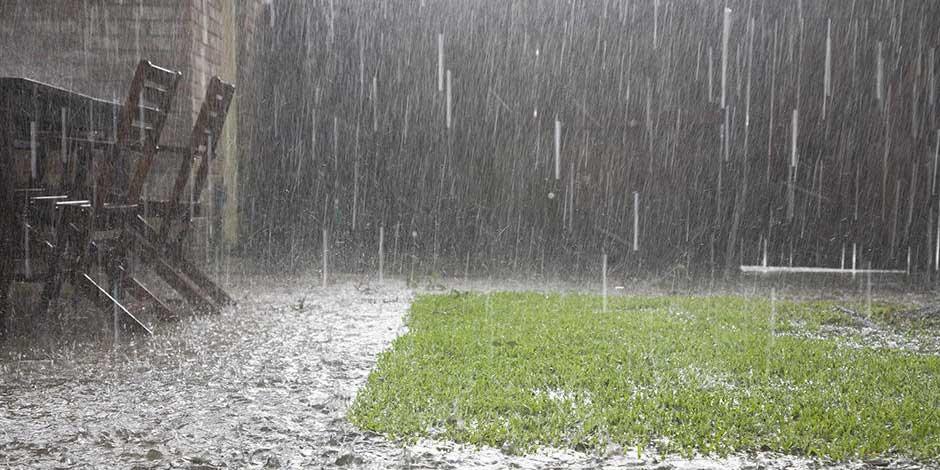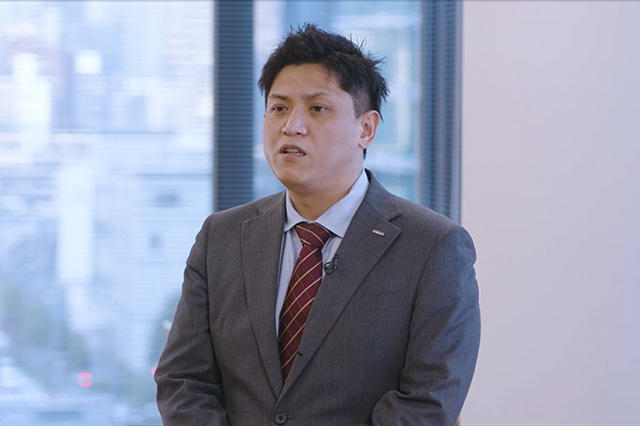
Rain, such as cold rain, the rainy season, or autumn rain, is a sign that the seasons are changing. But rain has become more than just a sign in recent years as flood damages occur in many areas because of an increase in long rainfalls caused by typhoons, heavy downpours, and linear precipitation belts. What are you doing to prepare for this? In recent years, natural disasters such as river flooding and inundation caused by rain have become more frequent and severe in Japan, and local governments are focusing their efforts on natural disaster countermeasures. In this issue, we introduce OMRON's efforts to deal with flood damage, an area we are particularly focused on as part of our initiative to create communities that are resilient to disasters.
гЂЂ
"It's going to rain again tomorrow..." says Mr.K , who lives in Maizuru City, Kyoto , while looking up at the sky with concern. K commutes to work every day by car. "Whenever there are long rains or typhoons, I worry about the rising level of river water. I always make sure to check for any impact on my current location, as well as at home and along my commute route. You have to be prepared, even when evacuating," says K.
That said, it is not like you can go and check if the river is swelling. When heavy rains continue or a typhoon hits, how do you decide when, and under what circumstances, to evacuate? Many people will probably estimate the level of danger in places that are relevant to them from the reports issued on a regional basis and decide whether or not to evacuate.
According to a report by the "Study Council on Improvement of Technical Terms for Disaster Management of Floods and Landslides " published by the Ministry of Land, Infrastructure, Transport and Tourism in 2020, when asked what kind of information in a broadcast would prompt you to evacuate, the top answer was "familiar locations and detailed information," which accounts for 67% of respondents. The next most common response was when they were told to "evacuate immediately" or "for everyone to evacuate," indicating that people decide to evacuate when they perceive danger as a personal matter.
гЂЂ
Maizuru is the central city of northern Kyoto Prefecture with a population of about 80,000. In recent years, flooding damage caused by typhoons and heavy downpours have been frequent, and the Disaster Relief Act was applied three times in 2013, 2017, and 2018. During this period, a total of 2,800 houses were flooded.
Although Maizuru has taken various disaster countermeasures, it has become increasingly difficult to control damage using only conventional measures, making it necessary to create a system in which residents can make decisions and take actions autonomously to minimize damage. Standing in the way of creating that system is a lack of information to make evacuation decisions during heavy rainfall. In the past, municipal staff used to go to rivers where the water level rose rapidly to check the disaster situation, placing them in perilous situations.
In response to this, the city is currently working to strengthen its disaster countermeasures and create a community that is resilient to natural disasters through industry-academia-government collaboration. OMRON SOCIAL SOLUTIONS Co., Ltd. (OSS) is one of the partner companies working with Maizuru to promote this. As a first step, OSS has developed a monitoring system capable of ascertaining detailed and real-time information about flood damage risks for the entire region.
This system integrates the water level information of all rivers under the jurisdiction of the national, prefectural, and municipal governments. OSS has also added sensors at points where water levels need to be monitored, and monitors water level information for rivers throughout the region in real time. The gathered information is then displayed on a map on the monitor. Residents and local officials can access all water level-related information on their computers, smartphones, and other devices.
On the map, information such as tide level and river water level is displayed as icons. The icons are color-coded into five levels: purple (flood danger), red (evacuation decision), yellow (flood caution), green (flood fighting corps on standby), and blue (safe), making it easy to visually and intuitively recognize the level of danger. This monitoring system is now available on the Internet and anyone with a computer or smartphone can use it. Maizuru has named this system the Maizuru city monitoring system and is now making use of it. This has enabled residents to take quick and safe evacuation actions autonomously in the event of a disaster.
The mayor of Maizuru, Ryozo Tatami , explains the reason for starting the project. "Our city is extremely vulnerable to rainfall because of the close proximity of the sea and mountains that surround us, and because water levels tend to rise in a short time after rainfall. We are also affected by the rising sea level caused by high tides. We wanted to use OMRON's technology to obtain a wide range of weather information and quickly issue evacuation information. We thought that if we could deal with flooding in our city, this system could be applied anywhere in Japan."
 Maizuru City Monitoring System (Actual Screen)
Maizuru City Monitoring System (Actual Screen)гЂЂ
In recent years, natural disasters have become more frequent and more severe, and each region will be required to develop communities that are more resilient to natural disasters. In the face of these social issues, Kota Nakano of OSS, who is in charge of the development of the monitoring system, said the following.
"The frequency and scale of natural disasters in Japan have changed dramatically. Most notably, the time required for a disaster to occur has become shorter. In the heavy rainfall of July 2018 that occurred over a wide area of Japan, primarily in western Japan, there were cases where flooding occurred in a short period of time: less than two hours from when flood cautions were issued to when the river actually started flooding. I believe that if there is a system where anyone can access information in a timely and easy manner, we can take actions to protect lives."
 Kota Nakano, Monitoring Business Department , OMRON Social Solutions Co., Ltd.
Kota Nakano, Monitoring Business Department , OMRON Social Solutions Co., Ltd.Nakano shares his determination for the future of the monitoring system.
"This service started as a flood countermeasure, but we will continue to improve it to realize 'a service that is used by residents and municipalities, which is the closest administration to the citizens.' We would also like to expand this system to all cities in Japan."
Now that the Maizuru city monitoring system is up and running, the aforementioned Mr.K feels safe knowing that updates on river conditions are available anytime and anywhere with just a smartphone. "I really appreciate being able to check the status of my destination before moving on," says K, who actively uses the system.
OMRON's challenge to create communities that are resilient to natural disasters has only just begun.